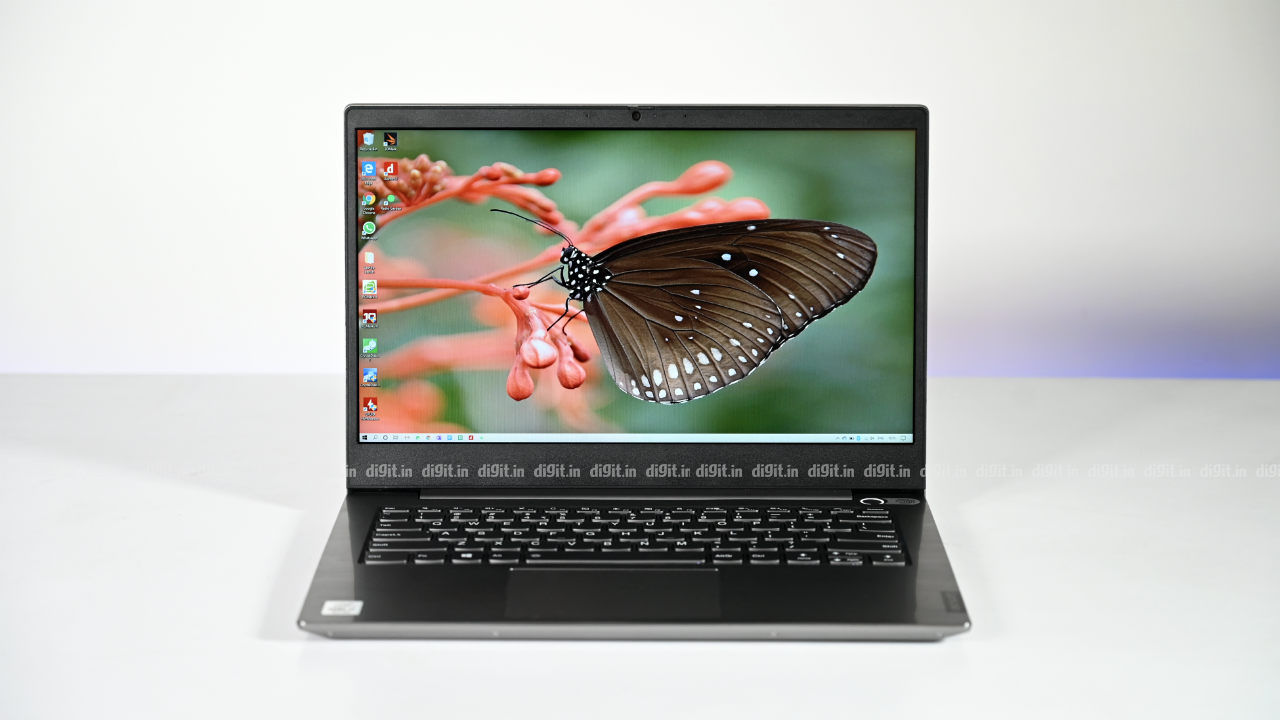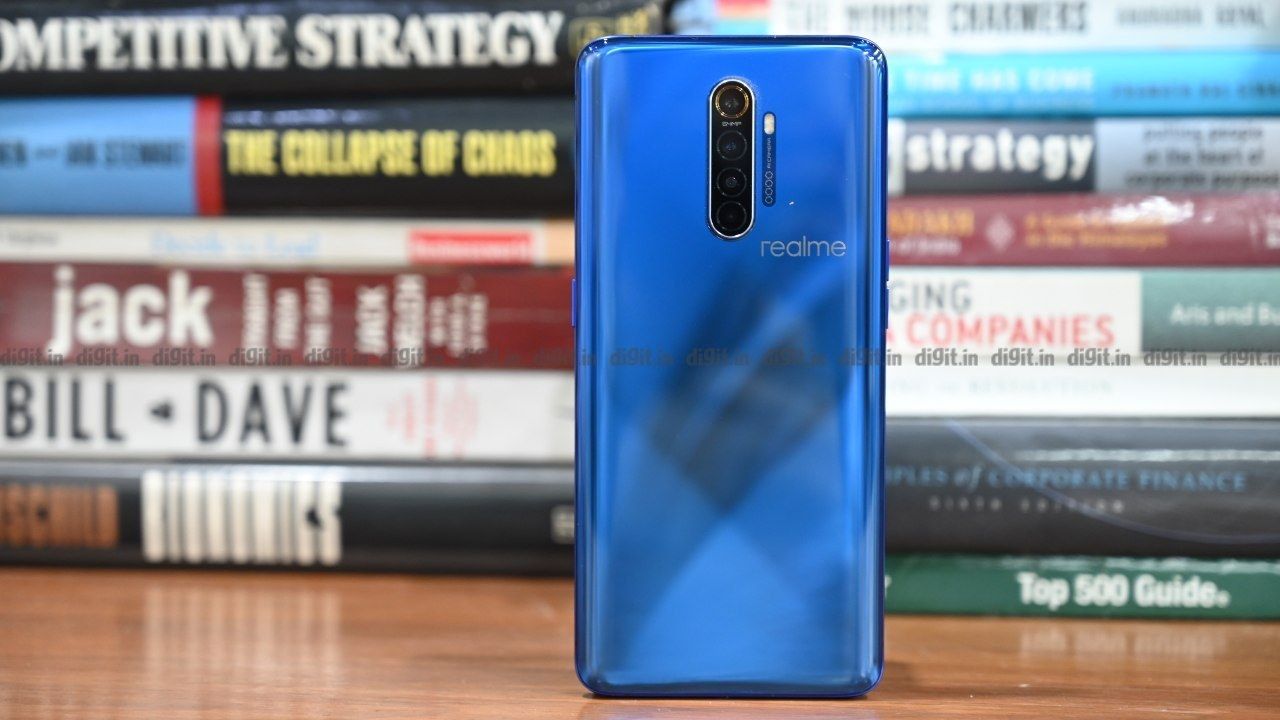
‘Flagship killer’ is a term much abused these days. One phone with top-end specs and below the belt pricing ends up getting that tag. It’s also a title that keeps being passed around. OnePlus had it for a while with the first few devices. Xiaomi snagged it with the Poco F1 and now Realme is giving us convincing reasons to call it’s Realme X2 Pro one. Just more than a year old. It’s the company’s first attempt at making a flagship. And on paper, it looks like the sweetest deal of the year. The phone emulates everything that’s good in the OnePlus 7T and then adds a few features on top. So much so it makes smartphones like the Galaxy Note 10+ and even the iPhone 11 Pro look unnecessarily expensive. While the company did admit these premium offerings to be the inspiration behind the X2 Pro, will a maxed-out spec sheet be enough for Realme to establish its name as a premium brand? Interestingly, most budget phone makers have stumbled in the first few steps of entering the premium segment where there’s a still a semblance of loyalty to brands like Samsung, Apple and OnePlus. Is Realme’s maiden flagship worth the hype and good enough to be this year’s flagship killer? Let’s find out
Performance
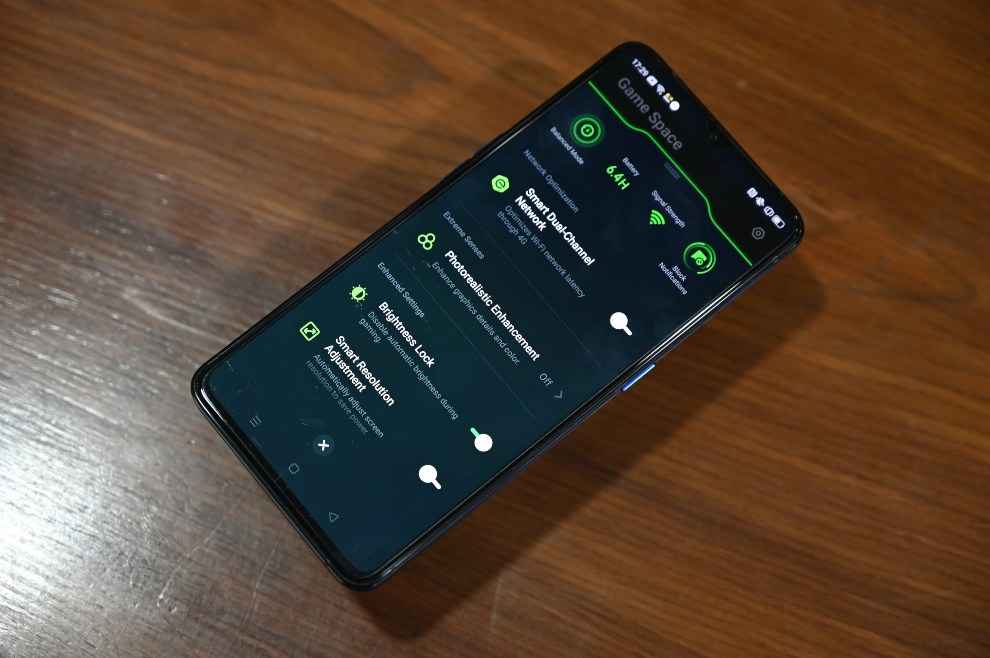
Let’s start with the most obvious. The Realme X2 Pro is fast. Faster than most other smartphones. Almost at par with the fastest. If you’re looking for a superfast performer at a budget. Stop reading right now, get the invite and place the order. It won’t leave you disappointed. In essence, it emulates the performance of the OnePlus 7T to a great extent, of course, at a much lesser price. You have the Snapdragon 855+ in both. 8GB RAM and 256GB UFS 3.0 storage in both. In fact, the X2 Pro offers a 12GB RAM variant at less than the price of the 8GB OnePlus 7T. So performance is undoubtedly good. Aiding the speed is the 90Hz refresh rate of the display. It enhances the experience of using the UI to an extent where it’s difficult to go back to using the usual 60Hz panel. Nevertheless, here’s how it fares on benchmarks —
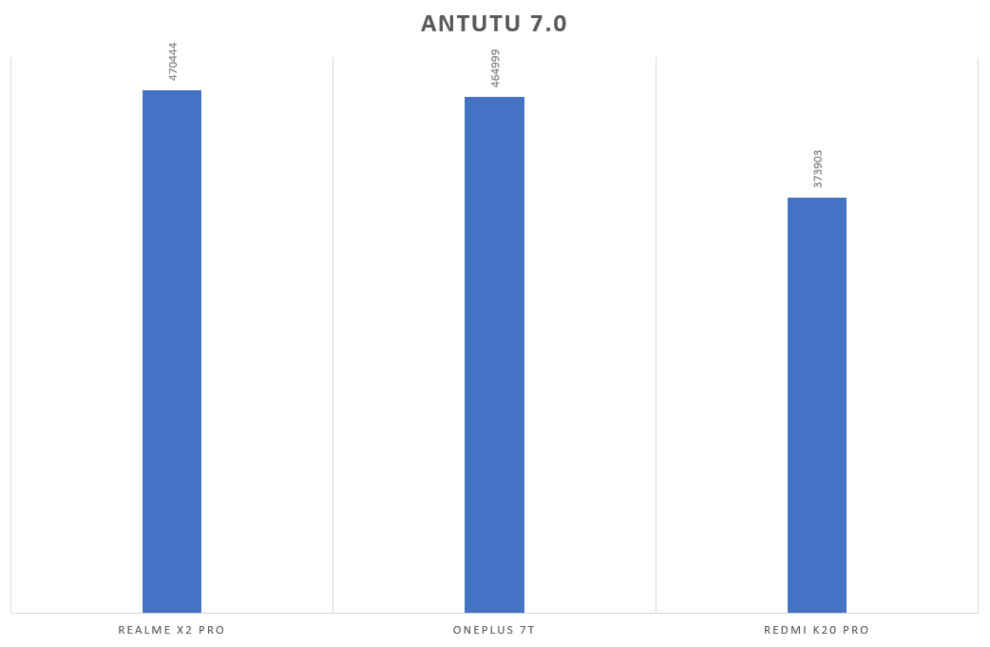
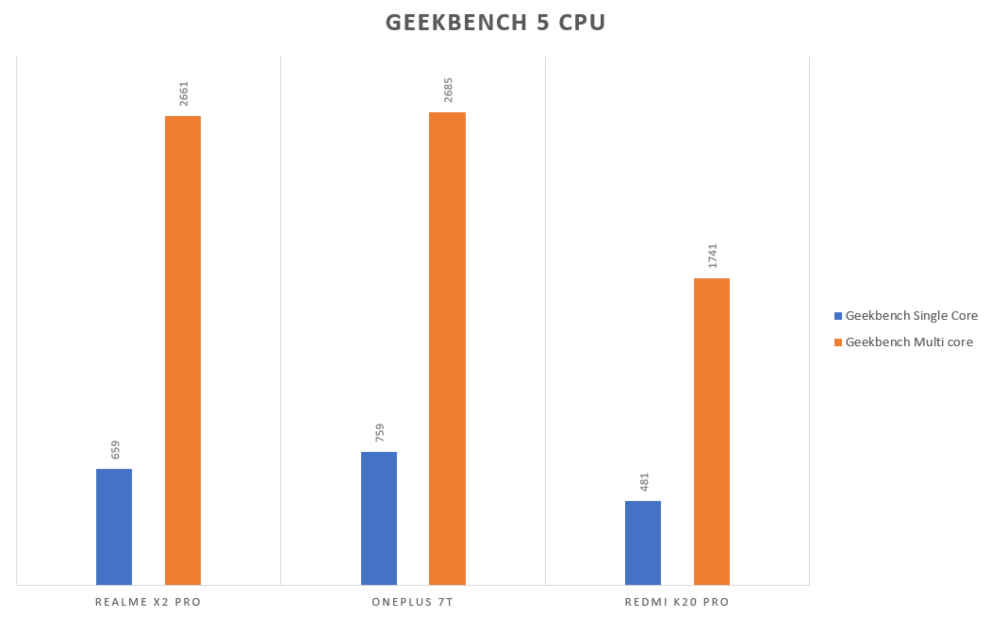 ‘
‘
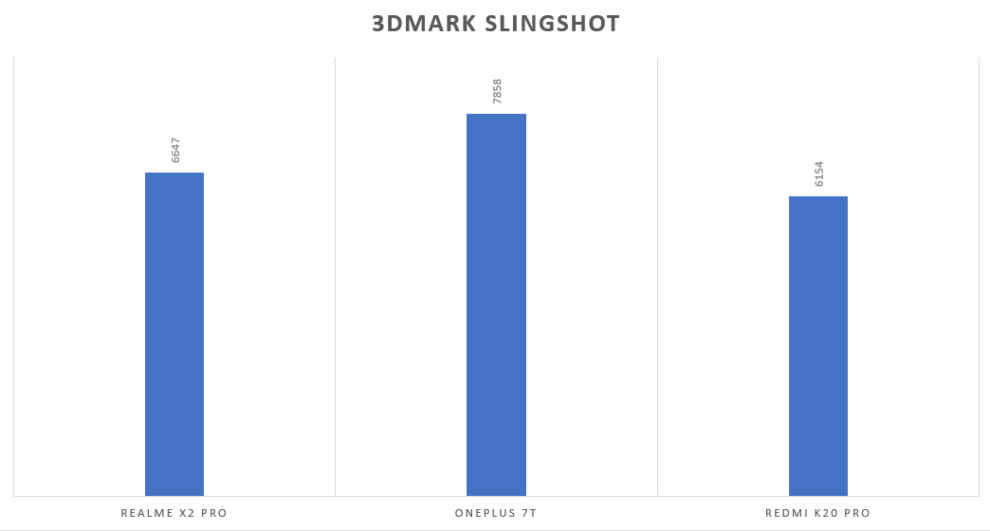
Long story short, the Realme X2 Pro is definitely fast and beats the OnePlus 7T and the Redmi K20 Pro in some of the synthetic benchmark tests. Both CPU and GPU metrics are at par with the fastest you can get in the Android space. It also makes the Redmi K20 Pro look slower, but it’s actually decently fast as well in usage, sans the 90Hz experience.
Considering all the firepower, the Realme X2 Pro’s forte is most definitely in gaming. It runs every game you throw at it with ease. CoD Mobile. PUBG Mobile. Asphalt 9. Everything runs at peak frame rates. You see the results in the chart below.
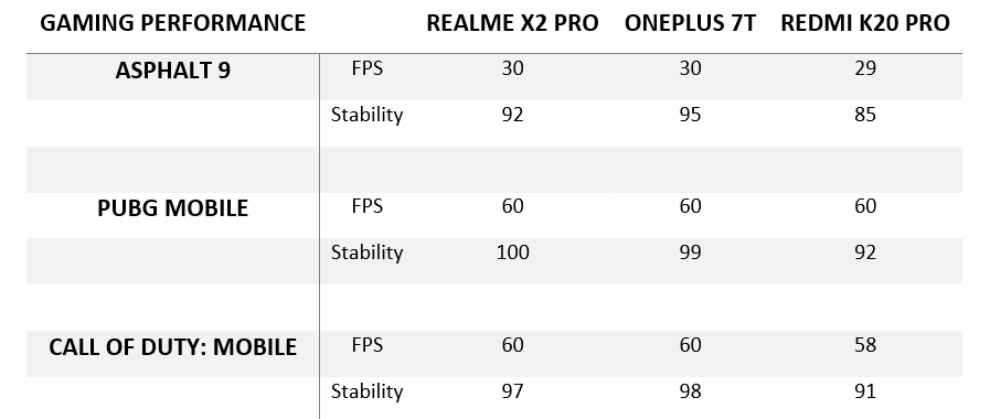
Note: 30 FPS for Asphalt 9 is the default except for the ROG Phone II and the new iPhones which can push the FPS to 60.
The gaming experience is further aided by a nicely designed consoles that comes down from above with a down swipe in-game. It lets you tweak performance modes, turn on screen recording, adjust call settings and more. It also allows you to answer messages while in-game through a pop-up window. These were there before in other Realme (and Oppo) phones, but it all just works really smooth in the X2 Pro. The audio output is also quite adequate for outdoor gaming. Game sounds come out loud and clear thanks to Dolby DTS: X certification.
If the benchmarks and the gaming performance were any indication, the Realme X2 Pro is perfectly reliable as a daily driver. We used the phone for around a week and the experience was more than satisfactory. The phone doesn’t heat up a lot in daily use and apps and games loads almost instantly. It also manages to cache games in the background like the OnePlus phones, and the RAM management is far less aggressive than the mid-range offerings from Realme.
Software
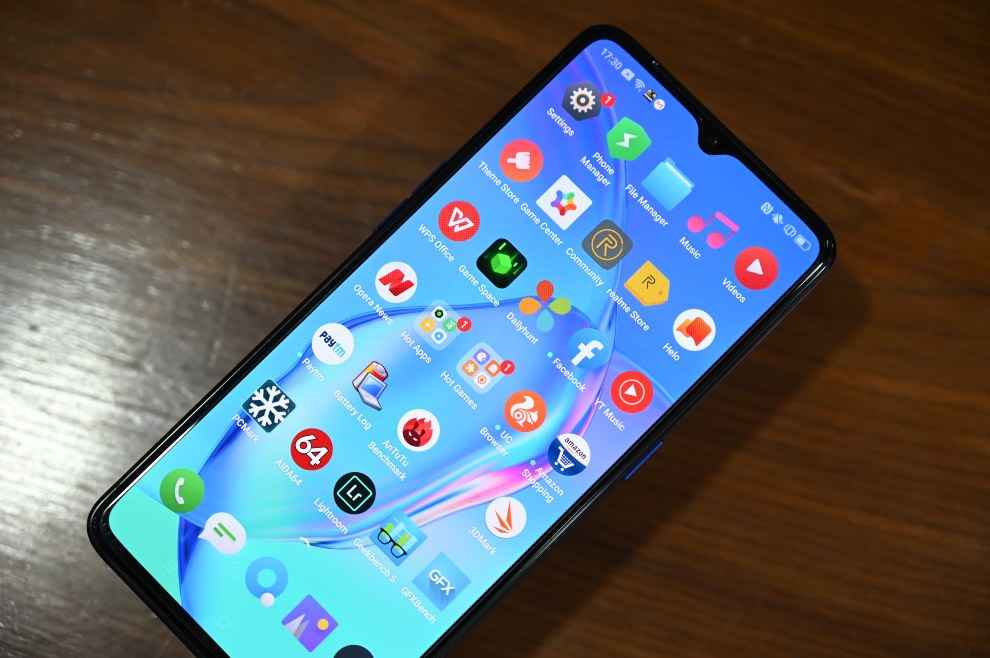
This is where the Realme X2 Pro differs from the OnePlus experience. While the latter uses an interface known for its minimalism and utility, ColorOS on the Realme X2 Pro feels like a UI meant for cheap phones powering a flagship smartphone. There’s no dearth of features, but the overall aesthetic mars the experience of using the flagship device. The UI is bloated with unnecessary apps out of the box and Realme (in extension Oppo’s) suite of in-house apps bombard you with notifications from the get go. That’s certainly something I wouldn’t want in a smartphone that’s meant to rival premium offerings from Samsung, Apple and OnePlus. Nevertheless, ColorOS 6 offers more or less the same features as other mid-rangers from Realme.
Realme is also coming out with its own custom UI based on the upcoming ColorOS 7. And the company will be pushing out the first beta build on the phone as soon as December. That’s certainly one way to draw more users to the smartphone.
Battery life
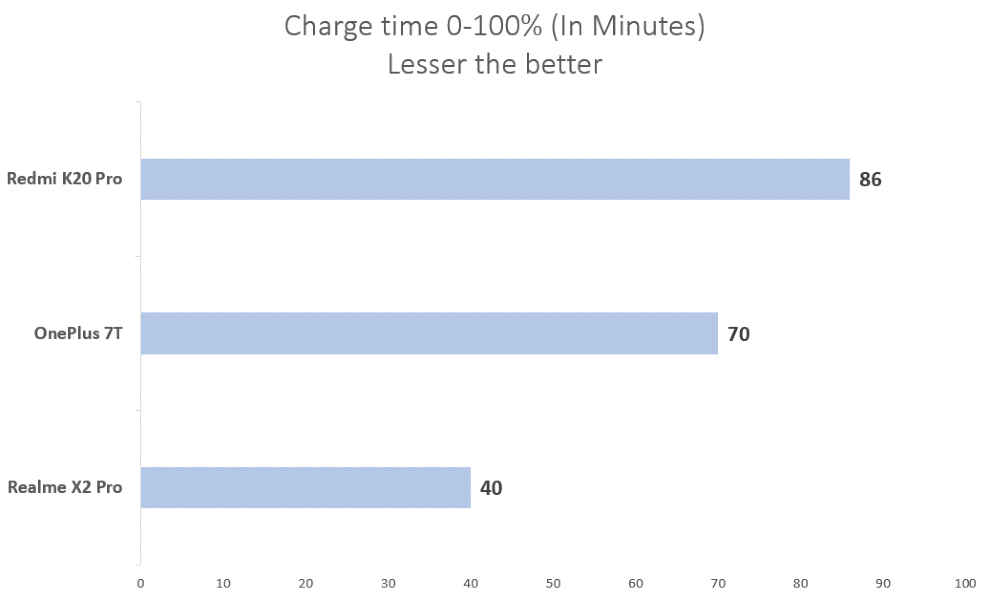
A 4,000mAh battery should become a standard in high-end and flagship smartphones, and the Realme X2 Pro enforces the rule. Only, the phone comes bundled with a 50W charger that tops up the battery in less than 30 minutes. That’s presently the fastest it can get, by a long mile. As for the battery life, the X2 Pro fares slightly lesser than the OnePlus 7T. We clocked 643 minutes on PCMark Work 2.0 battery life test, while the OnePlus 7T scored an even better 753 minutes. Both will last you a day under moderate use, but the OnePlus 7T can stretch it for a little longer. It’s unclear why the discrepancy considering most of the hardware under the hood is the same. It’s likely for the software optimisations in place which happens to be a little better on the OnePlus 7T.
Camera
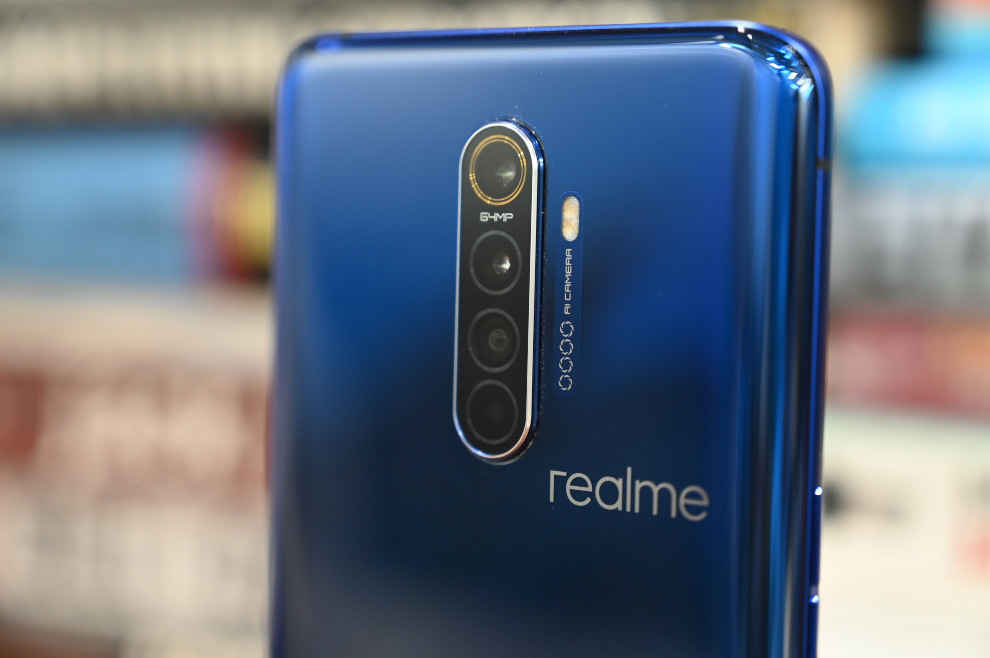
This is where the Realme X2 Pro sets a benchmark. It rocks a similar 64MP quad-camera setup as the previous Realme XT, only this time there’s a telephoto lens that can digitally zoom to 20X. The 64MP sensor is the same Samsung ISOCELL GW-1 sensor and then there’s a macro lens and a wide-angle lens. It’s more or less a setup that offers almost all the features that’s in vogue in 2019. High resolution photos. Wide-angle shots. Lossless zoom. And macro capabilities. But how do they all work in the real world? We will let these images do the talking —

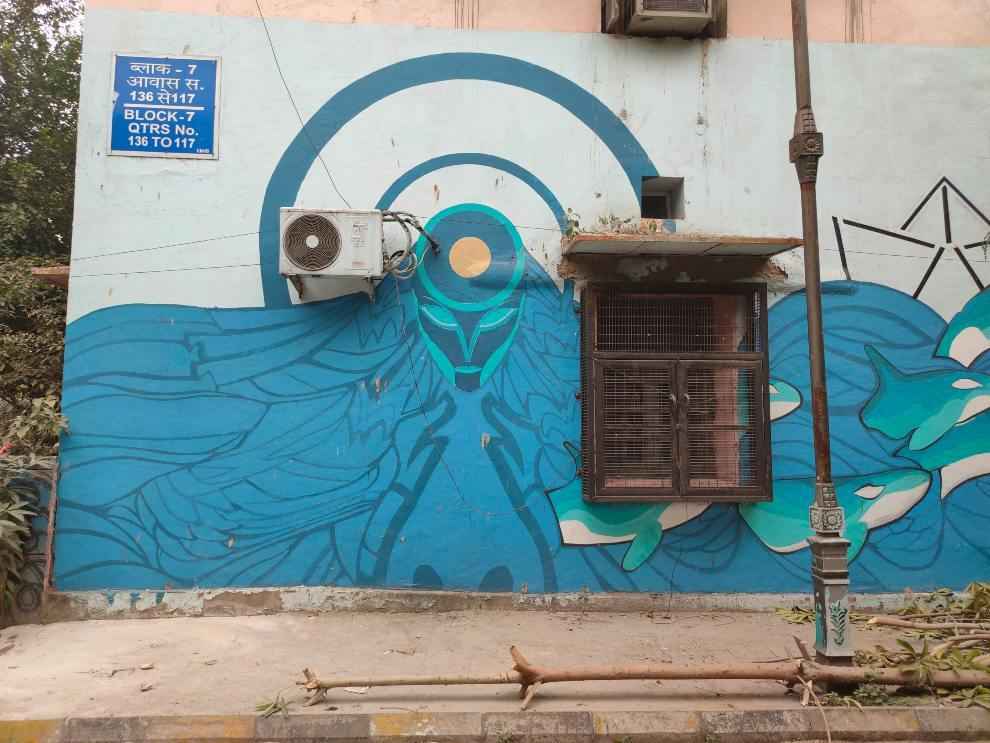


Looking at the images, it’s clear the Realme X2 Pro is well-tuned to generate sharp details with acceptable dynamic range. There were ample details in the shadows while good control over the highlights. Realme said they tuned the camera over the Realme XT which in turn was tuned around the Huawei P30 Pro. And it shows when you use the Chrome Boost mode which accentuates the contrast and saturation to a point which might not be what you saw while shooting. Nevertheless, the X2 Pro can shoot photos that are almost as good as the OnePlus 7T, just not better. We felt the colours were far more vibrant on the OnePlus 7T.
The low-light mode is also something we liked, even though it could have been lot better. Noise does creep in even when the camera takes a good 3-4 seconds to shoot the photo, especially in the darker regions. The highlights also look smudged, like a painting if you pixel peep.
Design and display
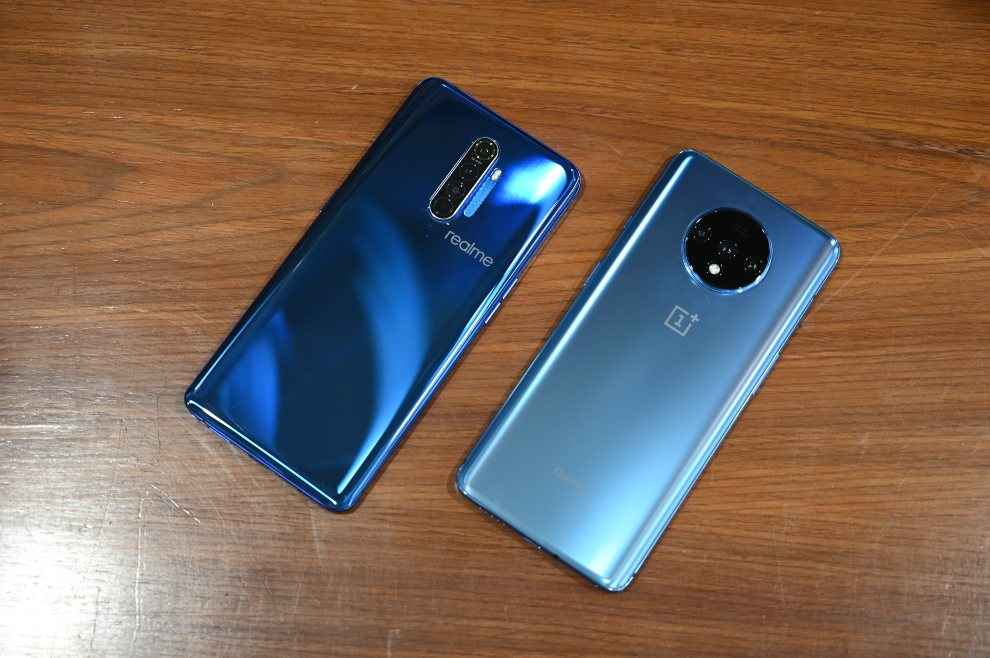
All these features in the X2 Pro, the design is the last thing you’d care about. This is also where the Realme X2 Pro feels cheaper than the OnePlus 7T. The 7T looks premium from the get go with a frosted glass finish, slow dispersing gradient on the back and a slim profile. The X2 Pro resembles the design Realme stuck to in the mid-range segment. But the materials used are much better. There’s Gorilla Glass 5 on both sides and a aluminum frame binding the body together. It’s also quite hefty to hold. The X2 Pro uses an in-screen fingerprint sensor which is just as fast as the OnePlus 7T. So is the face unlock. The X2 Pro also launched two Master Editions which resembles red brick and concrete respectively. Both have this sort of rough texture at the back and I’m not sure how it will feel to use for a prolonged period. It does manage to stand out though.
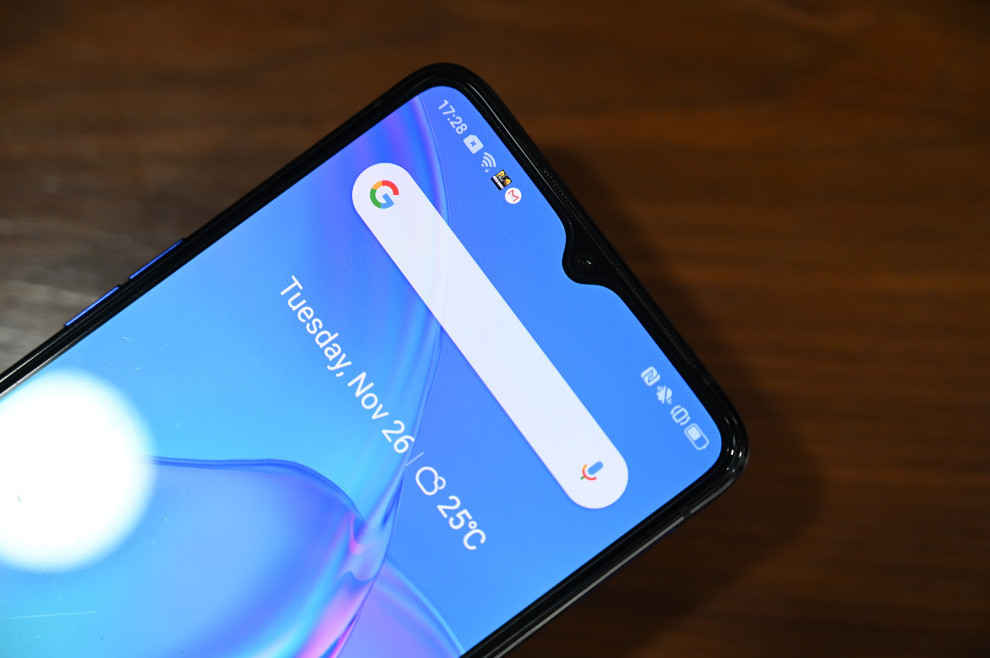
As for the display, this is where the X2 Pro really ups the ante. AMOLED. 90Hz refresh rate. 100 percent DCI-P3 support with HDR10+ certification. Widevine L1 support. These are all features we have now come to expect from premium smartphones this year and the X2 Pro doesn’t disappoint. The display is smooth enough to be used for serious gaming, and the 90Hz refresh rate, as we mentioned before, makes for a much better UI experience. The whites on the panel does seem a little blueish, but it will really require more testing to know for sure. There are options to tweak the colour profiles, and to switch between 60Hz and 90Hz (doesn’t happen automatically). Furthermore, HDR10+ only works in supported games like PUBG Mobile and YouTube. Netflix and Amazon Prime Video support is not there yet, but we expect it to be added soon since both these streaming websites periodically update support for HDR content for new devices. Overall, this is a panel that doesn’t take away from the experience, like the Poco F1 last year. Instead, it adds more value to an already feature-packed offering from Realme.
Bottomline
There are clear reasons to consider the Realme X2 Pro the best buy this year. For the starting price of Rs 29,999, the X2 Pro offers a staggering list of features and most of them seem to just work without a hitch. The charging speed and the refresh rate are definitely something I would struggle to get in most other flagship phones, leave alone the mid-rangers and the camera quality is just enough to make it worthwhile. There’s also qualms about the performance. Only the design somewhat keeps it away from joining the premium club, which is acceptable considering the price at which Realme is selling the phone. But then again, don’t give up hopes of an alternative just yet. We hear Xiaomi is planning to launch the Mi Note 10 with the 108MP camera in India in December, and if that’s priced reasonably well, that should give the X2 Pro stiff competition. As of now, if you are deciding between the X2 Pro and the OnePlus 7T, and if you are design agnostic, the Realme X2 Pro offers far more bang for the buck than any other smartphone at present.
[ad_2]
Source link


